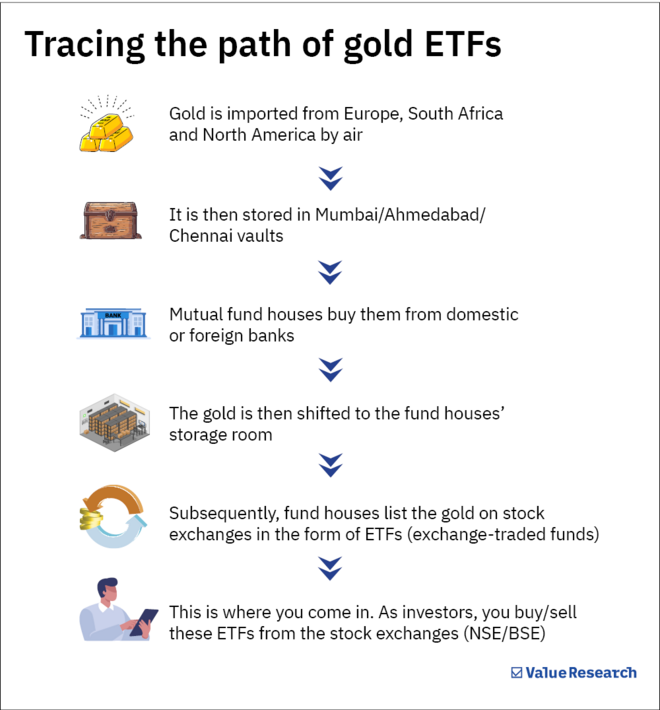
Conventionally, gold is an expensive investment. But with the advent of gold funds it is finally possible to easily invest in it. However, have you ever wondered where this gold comes from and how it reaches the stock exchanges?
Do fund houses purchase physical gold? Is it imported? Is it stored physically? These were just some of the curious questions we had, and so we unravelled the physical process behind gold funds.
Further questions you may have
What kind of gold do fund houses buy?
Gold bars that weigh 1 kg and with a purity level of 99.5 per cent
How do the fund houses validate the authenticity of the precious metal?
The gold bars come with an original certificate, a bar list from the refiner and relevant shipping documents that confirm the purity of the metal.
How do investors buy the precious metal stored by mutual fund houses?
As mentioned earlier, once the fund house converts the gold bars into ETFs in the stock exchange, you as investors have the option to invest in them.
You can even buy and sell one unit of the ETF, which is good news for small investors who can't afford to buy gold or jewellery.
One unit of an ETF is approximately equal to 0.01 gram of gold. (However, some fund houses may also set each unit of the ETFs to 1 gram of gold).
But do remember that you need a demat account. It is very similar to trading in stocks.
Should you buy gold ETFs?
At Value Research, we usually discourage purchasing gold due to its limited potential for long-term wealth growth.
But if you are adamant, we'd suggest you look at sovereign gold bonds. They are a better option than physical gold or gold ETFs.








